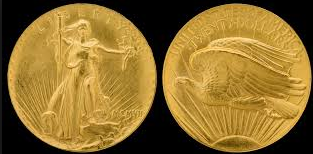Introduction:
Coins have been an integral part of global trade and commerce for centuries, serving as a significant medium of exchange. Numismatics, the study of coins, has been an active field of study to understand the history and relevance of coins in different civilizations. Non-numismatic coins are a part of the broader category of coins unrelated to numismatics. This article will dive deep into non-numismatic coins, exploring their history, types, and relevance.
What are Non Numismatic Coins?
Non-numismatic coins are coins that do not have any significant numismatic value. Numismatic value is determined by rarity, scarcity, historical relevance, and other factors. Unlike numismatic coins, non-numismatic coin value lies in their bullion or intrinsic value. In other words, these coins are valued for their metal content rather than their rarity or historical significance.
Types of Non Numismatic Coins:
Different types of non-numismatic coins make up the market. Let’s have a look at some of them:
1) Bullion Coins: Bullion coins are made from precious metals like gold, silver, and platinum. These coins are valued for their metal content, with no numismatic value. Bullion coins come in various denominations and are issued by mints worldwide.
2) Commemorative Coins: Commemorative coins are issued to commemorate events or occasions. These coins are mainly made of silver or copper and are not intended for circulation.
3) Currency Coins: Unlike numismatic coins, currency coins are issued by governments and central banks for general circulation. These coins are often made of base metals like copper and nickel and do not have any significant numismatic value.
4) Medallions: Medallions are non-numismatic coins that are similar to coins but do not act as legal tender. These coins are often used for commemorative purposes and are made of precious metals like gold or silver.

Importance of Non-Numismatic Coins:
Non-numismatic coins play a crucial role in the global economy due to their intrinsic value. These coins are typically made of precious metals like gold and silver, which are highly valued in the market. Bullion coins, for example, are widely traded globally, and their metal content determines their value. In times of economic uncertainty, non-numismatic coins act as a reliable investment option as they offer a hedge against inflation.
These coins also have historical significance as they have been used for centuries as a medium of exchange. From ancient civilizations like Rome and Greece to today’s global economy, coins have played a pivotal role in international trade.
Leads for Collectors:
Non-numismatic coins may not have significant numismatic value, but they are still valuable to collectors. Bullion coins, for example, have different designs and minting techniques, making them popular among collectors. Commemorative coins and medallions, although not used as legal tender, have designs and engravings that are significant to collectors. Collectors often collect these coins as a hobby or investment, as they hold intrinsic value.
Conclusion:
In conclusion, non-numismatic coins are an integral part of the global economy, serving as a reliable investment option and a medium of exchange. These coins are valued for their metal content rather than their rarity or historical significance. Although they may not have significant numismatic value, they are still valuable to collectors due to their designs and engravings. Non-numismatic coins have a rich history and are pivotal in the global economy.
At Coinleads, we can handle all your non-numismatic coin needs. Contact us if you have any questions.
continue reading
Related Posts
Investing in buy coin leads can be a lucrative opportunity […]
Finding suitable leads can be the difference between a successful […]
Introduction: Silver has always been a precious metal, not only […]
